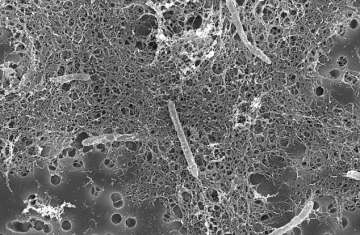Cosmic rays, one of the most dangerous aspects of space for the human body, could really be a wellspring of life, a new study proposes.
The study of a bacterium thriving deep in a South African dark gold mine suggests that extreme microbes that live in hostile places on Earth may feed off galactic cosmic rays.
“When you have radiation penetrating deep below the surface, where there might be water on Mars or (Jupiter’s moon) Europa, then it could start chemical reactions that life could use,” said study author Dimitra Atri, a researcher at the Blue Marble Space Institute of Science in the US.
“Organisms that live off of galactic cosmic rays could even dwell on rogue planets that are not bound to any star and instead drift throughout interstellar space,” Atri said.
The bacterium Candidatus Desulforudis audaxviator, found about 2.8 kilometres deep, lives off the energy from radioactive isotopes of uranium, thorium and potassium in the rocks there.
Ionising radiation from these isotopes breaks down water in the area into hydrogen gas, which the bacterium can use as fuel, and helps to generate other biologically useful molecules, ‘Live Science’ reported.
Galactic cosmic rays possess much higher energy than other sources of radiation on Earth.
Making use of computer simulations, Atri found that galactic cosmic rays, though rare, could provide a steady flow of energy for life underground.
This energy was comparable to that emitted by radioactive substances on Earth.
The energy flow could extend to potential life on other planets as well, he said.
(With inputs from PTI)
Latest World News

